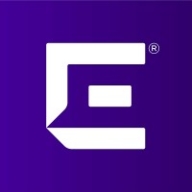

ExtremeWireless and Cisco Wireless compete in the wireless networking market. Cisco seems to have an advantage in features due to its robust offerings despite the higher cost.
Features: ExtremeWireless is known for its integration capabilities, scalability, and simplified management tools. Cisco Wireless offers extensive security features, advanced analytics, and comprehensive network management.
Room for Improvement: ExtremeWireless could enhance its feature set for more particular applications like the hospitality industry. It may also benefit from developing a more feature-rich management interface. Cisco Wireless might improve its user interface for less tech-savvy clients and address cost concerns. Additionally, streamlining complex deployments could attract smaller businesses.
Ease of Deployment and Customer Service: ExtremeWireless offers guided setup and responsive support for quick implementation. Cisco Wireless, though complex, provides detailed documentation and reliable assistance for enterprises needing tailored network setups.
Pricing and ROI: ExtremeWireless provides competitive pricing and strong ROI due to lower setup costs and efficient resource management. Cisco Wireless involves a higher initial investment but offers substantial long-term benefits with its powerful features.
The monitoring access and excellent support provide significant value.
The best ROI is achieved over a three-year term.
The technical support from Cisco is of high quality.
The technical support from Cisco is good.
I rate their support as a nine because they are very helpful when we need assistance and they strive to help, even if not the fastest.
The response time and quality could be better, and updates can be troublesome at times.
I would rate the customer service as a ten.
The Extreme access points handle high-density connectivity needs very well, managing lots of traffic efficiently.
ExtremeWireless is suitable for companies with a user base below three hundred.
The scalability of ExtremeWireless is average.
They work well without failures.
I experienced issues during firmware upgrades, as some devices required a physical restart, which affects system stability.
The stability of ExtremeWireless is somewhat weaker compared to previous solutions, like Motorola before its acquisition.
Sometimes, integration with other Cisco products requires manual intervention for tasks such as firmware upgrades, which should be automated.
In the long term, there could be a cost reduction because it does not require much maintenance.
I wish for ExtremeWireless to optimize the roaming capability between access points, especially for IoT devices.
Another area that could use enhancement is the clarity and implementation of updates, as they can be troublesome sometimes.
They should develop more troubleshooting tools for system management.
Cisco has provided significant discounts for large-scale deployments.
The price of Cisco Wireless is pretty expensive.
The licensing of Cisco Wireless is competitive.
Each customer typically buys around 100 APs, which makes it quite expensive.
Initially, the switch from Cisco to ExtremeWireless was financially favorable due to attractive pricing.
The pricing is a weak point for Extreme; it is very high.
If one network fails, there is a link between different access points, which ensures network continuity.
Cisco Wireless is easy to configure.
When I install it, I can forget about it because there is no need for ongoing maintenance, and no other problems occur.
A single license can be used for on-premises, hybrid, or cloud, allowing for easy transition between solutions without losing investment.
The most valuable features of ExtremeWireless include the management through the one dashboard management with ActionCloud IQ, integrated with Site Engine.
Extreme access points perform very well in high-density environments, and we use them at sites with our customers.
| Product | Market Share (%) |
|---|---|
| Cisco Wireless | 11.0% |
| ExtremeWireless | 2.0% |
| Other | 87.0% |


| Company Size | Count |
|---|---|
| Small Business | 74 |
| Midsize Enterprise | 42 |
| Large Enterprise | 74 |
| Company Size | Count |
|---|---|
| Small Business | 14 |
| Midsize Enterprise | 10 |
| Large Enterprise | 8 |
Cisco Wireless is a comprehensive suite of wireless solutions designed to deliver secure, high-performance connectivity for enterprises of all sizes. Offering a range of access points, controllers, and advanced management tools, Cisco Wireless ensures seamless and reliable network access, enhancing mobility and productivity.
Cisco Wireless solutions provide robust, scalable wireless networks capable of supporting high-density environments and diverse applications. With features such as seamless roaming, advanced security protocols, and detailed analytics, Cisco Wireless addresses the needs of modern businesses. The solutions include the Cisco Catalyst and Aironet series access points, wireless LAN controllers, and the Cisco DNA Center for centralized management and automation.
What are the key features of Cisco Wireless?
What benefits should users look for in reviews when evaluating Cisco Wireless?
Cisco Wireless solutions are implemented across various industries, including healthcare, education, retail, and manufacturing. In healthcare, they support critical applications like patient monitoring and electronic health records. Educational institutions use Cisco Wireless to provide reliable internet access for students and staff. Retailers benefit from enhanced customer experiences through in-store connectivity, while manufacturers use wireless networks to improve operational efficiency and automation.
Pricing and licensing for Cisco Wireless solutions are typically based on the scale of deployment and specific product selections. Cisco offers various support plans, including 24/7 customer service, technical support, and access to software updates and patches.
In summary, Cisco Wireless provides robust, scalable wireless networking solutions that enhance connectivity, security, and management for diverse enterprise environments.
We monitor all Wireless LAN reviews to prevent fraudulent reviews and keep review quality high. We do not post reviews by company employees or direct competitors. We validate each review for authenticity via cross-reference with LinkedIn, and personal follow-up with the reviewer when necessary.